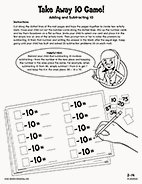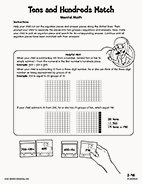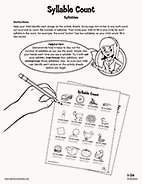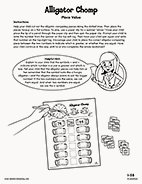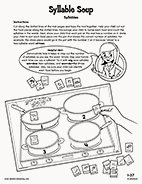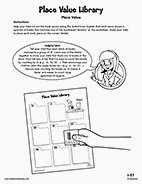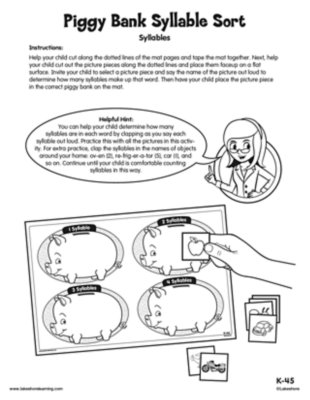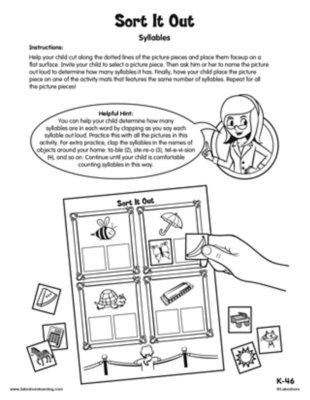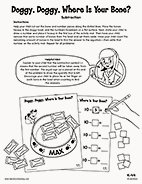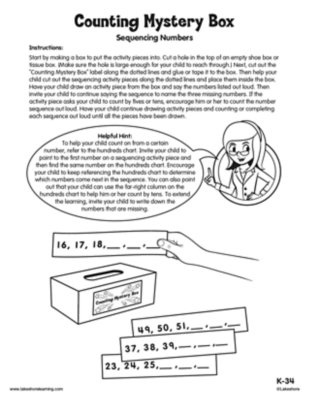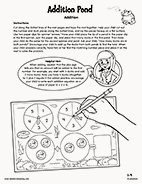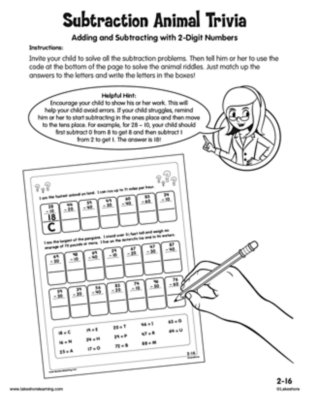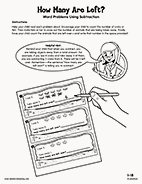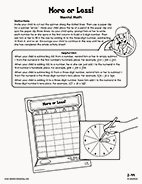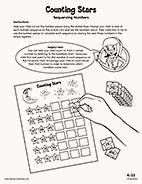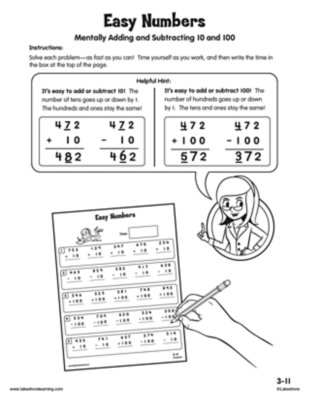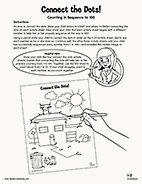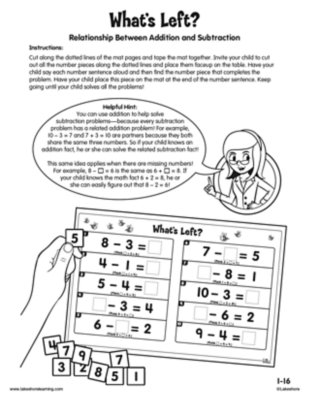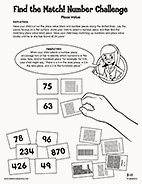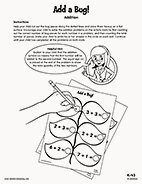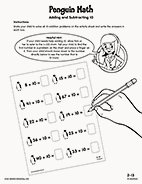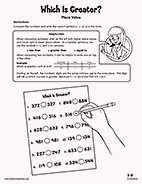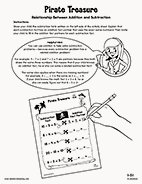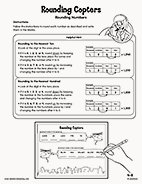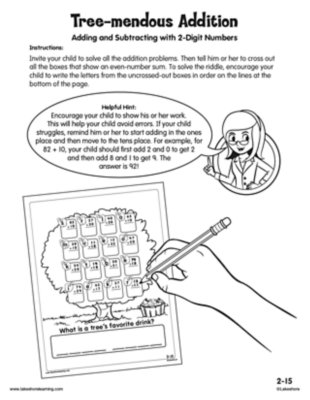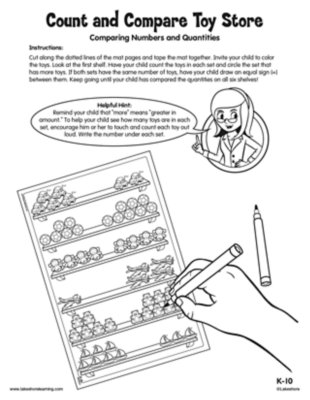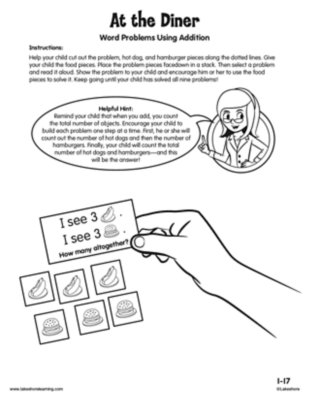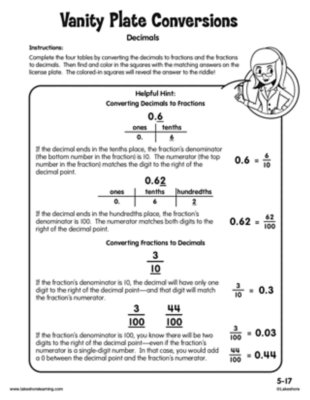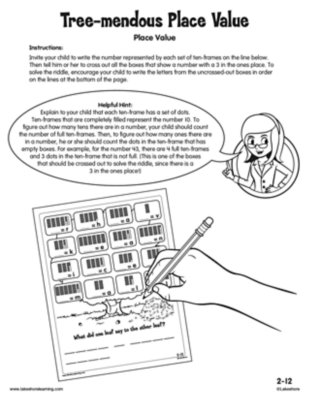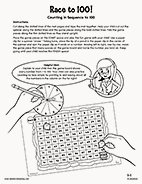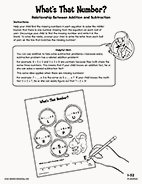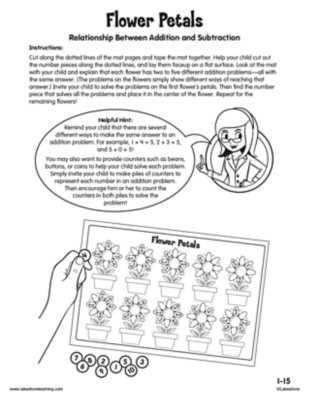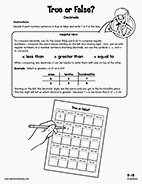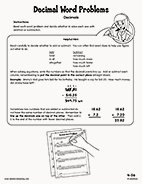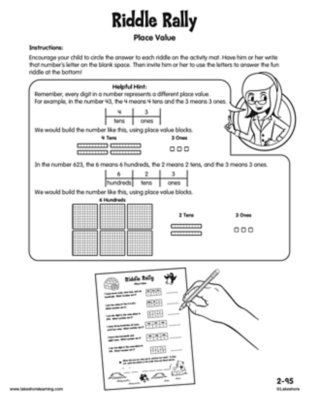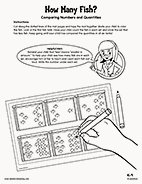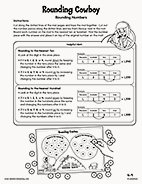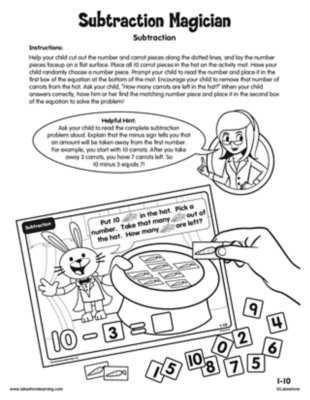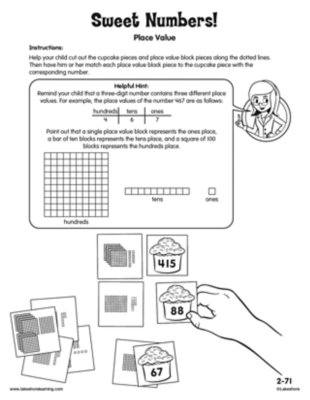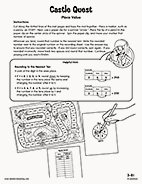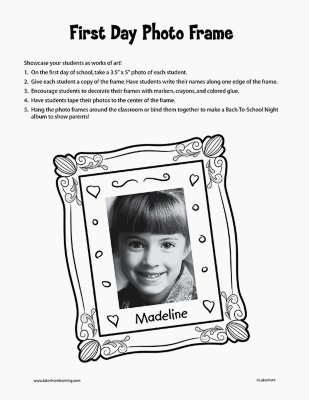
When entering second grade, your child should be able to mentally add 10 to or subtract 10 from any two-digit number—without having to count. For example, 32 + 10 = 42 and 35 — 10 = 25.
View worksheetDuring second grade, your child will learn to mentally subtract multiples of 10 from three-digit numbers without having to write down the problems and work them out. For example, 800 — 10 = 790.
View worksheetWhen entering first grade, your child should be able to count and say the syllables in spoken words. For example, your child should understand that “kitten” has two syllables: kit•ten.
View worksheetDuring first grade, your child will learn to compare two-digit numbers using greater than (>), less than (<) or equal to (=) symbols, such as 22 > 12. Your child will also learn that 10 can be thought of as a group of 10 ones—called a “ten.”
View worksheetWhen entering first grade, your child should be able to count and say the syllables in spoken words. For example, your child should understand that “kitten” has two syllables: kit•ten.
View worksheetDuring first grade, your child will learn to compare two-digit numbers using greater than (>), less than (<) or equal to (=) symbols, such as 22 > 12. Your child will also learn that 10 can be thought of as a group of 10 ones—called a “ten.”
View worksheetDuring kindergarten, your child will learn to count and say the syllables in spoken words. For example, your child should understand that “kitten” has two syllables: kit•ten.
View worksheetDuring kindergarten, your child will learn to count and say the syllables in spoken words. For example, your child should understand that “kitten” has two syllables: kit•ten.
View worksheetDuring kindergarten, your child will learn to add and subtract simple facts. For example, 3 + 7 = 10 and 10 — 5 = 5.
View worksheetWhen entering third grade, your child should be able to mentally add 10 or 100 to any given number from 100 to 900 without having to write down the problems and work them out. For example, 156 + 10 = 166 and 234 + 100 = 334.
View worksheetDuring kindergarten, your child will learn to count in sequence from 1 to 100 by ones (1, 2, 3, 4…) and tens (10, 20, 30, 40…).
View worksheetWhen entering first grade, your child should be able to add and subtract simple facts. For example, 3 + 7 = 10 and 10 — 5 = 5.
View worksheetWhen entering second grade, your child should be able to add and subtract using a two-digit number and a one-digit number, as well as a two-digit number and another two-digit number. For example, 22 + 20 = 42 and 41 — 10 = 31.
View worksheetWhen entering first grade, your child should be able to solve word problems that involve adding or subtracting within 10.
View worksheetDuring second grade, your child will learn to mentally subtract multiples of 10 from three-digit numbers without having to write down the problems and work them out. For example, 800 — 10 = 790.
View worksheetDuring kindergarten, your child will learn to count in sequence from 1 to 100 by ones (1, 2, 3, 4…) and tens (10, 20, 30, 40…).
View worksheetWhen entering third grade, your child should be able to mentally add 10 or 100 to any given number from 100 to 900 without having to write down the problems and work them out. For example, 156 + 10 = 166 and 234 + 100 = 334.
View worksheetWhen entering first grade, your child should be able to count to 100 by ones (1, 2, 3, 4…) and tens (10, 20, 30, 40…).
View worksheetWhen entering first grade, your child should be able to use objects or drawings to answer “How many more make 10?” when given a number. Your child should also be able to use objects or drawings to break apart any number up to 10 in more than one way, such as breaking up the number 7 into 5 and 2, as well as 3 and 4.
View worksheetWhen entering second grade, your child should be able to see groups of tens and ones when counting. Your child should also understand that the two digits in a two-digit number represent tens and ones. For example, there are 3 tens and 2 ones in the number 32.
View worksheetDuring kindergarten, your child will learn to add and subtract simple facts. For example, 3 + 7 = 10 and 10 — 5 = 5.
View worksheetWhen entering second grade, your child should be able to mentally add 10 to or subtract 10 from any two-digit number—without having to count. For example, 32 + 10 = 42 and 35 — 10 = 25.
View worksheetWhen entering third grade, your child should understand that the three digits in a three-digit number represent hundreds, tens and ones. Your child should also be able to write three-digit numbers in expanded form, such as writing 726 as 700 + 20 + 6. Your child should also be able to compare two 3-digit numbers using the greater than (>), less than (<) and equal to (=) symbols.
View worksheetWhen entering third grade, your child should understand that the three digits in a three-digit number represent hundreds, tens and ones. Your child should also be able to write three-digit numbers in expanded form, such as writing 726 as 700 + 20 + 6. Your child should also be able to compare two 3-digit numbers using the greater than (>), less than (<) and equal to (=) symbols.
View worksheetDuring first grade, your child will learn that addition and subtraction are closely related. For example, your child will solve the problem 10 — 2 = ? by understanding that 8 + 2 = 10.
View worksheetWhen entering fourth grade, your child should know how to round whole numbers to the nearest 10 or 100.
View worksheetWhen entering second grade, your child should be able to add and subtract using a two-digit number and a one-digit number, as well as a two-digit number and another two-digit number. For example, 22 + 20 = 42 and 41 — 10 = 31.
View worksheetWhen entering kindergarten, your child should be able to count groups of up to 10 objects and determine if one group of objects is more than, less than or equal to the other.
View worksheetWhen entering first grade, your child should be able to solve word problems that involve adding or subtracting within 10.
View worksheetWhen entering fifth grade, your child should be able to compare decimals to the hundredths place, such as 0.45 and 0.07. Your child should also be able to write fractions with denominators of 10 or 100 as decimals, such as writing 3/10 as 0.3 and writing 34/100 as 0.34.
View worksheetWhen entering second grade, your child should be able to see groups of tens and ones when counting. Your child should also understand that the two digits in a two-digit number represent tens and ones. For example, there are 3 tens and 2 ones in the number 32.
View worksheetWhen entering first grade, your child should be able to count to 100 by ones (1, 2, 3, 4…) and tens (10, 20, 30, 40…).
View worksheetDuring first grade, your child will learn that addition and subtraction are closely related. For example, your child will solve the problem 10 — 2 = ? by understanding that 8 + 2 = 10.
View worksheetWhen entering first grade, your child should be able to use objects or drawings to answer “How many more make 10?” when given a number. Your child should also be able to use objects or drawings to break apart any number up to 10 in more than one way, such as breaking up the number 7 into 5 and 2, as well as 3 and 4.
View worksheetWhen entering fifth grade, your child should be able to compare decimals to the hundredths place, such as 0.45 and 0.07. Your child should also be able to write fractions with denominators of 10 or 100 as decimals, such as writing 3/10 as 0.3 and writing 34/100 as 0.34.
View worksheetDuring fourth grade, your child will learn to write fractions with denominators of 10 or 100 as decimals, such as writing 3/10 as 0.3 and writing 34/100 as 0.34. Your child will also learn to add and subtract amounts of money using decimals.
View worksheetDuring second grade, your child will learn to identify groups of hundreds, tens and ones when counting. Your child will also learn that the three digits in a three-digit number represent hundreds, tens and ones. For example, there are 7 hundreds, 2 tens and 6 ones in the number 726.
View worksheetWhen entering kindergarten, your child should be able to count groups of up to 10 objects and determine if one group of objects is more than, less than or equal to the other.
View worksheetDuring fourth grade, your child will learn to write fractions with denominators of 10 or 100 as decimals, such as writing 3/10 as 0.3 and writing 34/100 as 0.34. Your child will also learn to add and subtract amounts of money using decimals.
View worksheetWhen entering fourth grade, your child should know how to round whole numbers to the nearest 10 or 100.
View worksheetDuring third grade, your child will learn to use his or her understanding of place value to round whole numbers to the nearest 10 or 100.
View worksheetWhen entering first grade, your child should be able to add and subtract simple facts. For example, 3 + 7 = 10 and 10 — 5 = 5.
View worksheetDuring second grade, your child will learn to identify groups of hundreds, tens and ones when counting. Your child will also learn that the three digits in a three-digit number represent hundreds, tens and ones. For example, there are 7 hundreds, 2 tens and 6 ones in the number 726.
View worksheetDuring third grade, your child will learn to use his or her understanding of place value to round whole numbers to the nearest 10 or 100.
View worksheet
